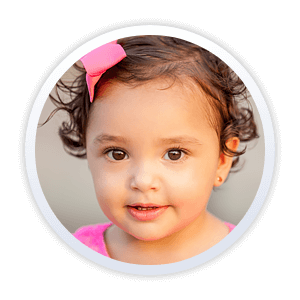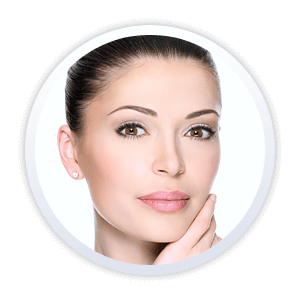6028 S. Fort Apache Road, Suite 101
Las Vegas, Nevada 89148
Phone: 702.896.2020
Hours:
Mon-Thurs: 8AM–5PM
Friday 8AM–4:30PM
Sat & Sun: Closed
Eye Doctor in Las Vegas, NV
- Pediatric Eye Care
- Amblyopia (Lazy Eye) – A condition where one eye is weaker than the other, leading to poor vision development in that eye. Early treatment can help improve vision.
- Blepharitis, Meibomitis, Chalazia – These are common eyelid conditions causing irritation, swelling, or bumps on the eyelids. Treatment may include warm compresses or medication.
- Pediatric Cataracts – Clouding of the eye’s lens that can affect vision in children. Early detection and treatment are crucial for preventing vision problems.
- Eye and Eyelid Lesions – Small growths or spots on the eye or eyelids, which may require evaluation to ensure they are not harmful.
- Myopia Management – Techniques and treatments to slow the progression of nearsightedness in children, helping to protect their vision over time.
- Nasolacrimal Duct Obstruction – A blockage in the tear duct that causes watery eyes and can lead to infection. Often treated with massage or minor procedures.
- Nystagmus – A condition where the eyes make repetitive, uncontrolled movements, which can affect vision. Various treatments may help manage the symptoms.
- Orbital Lesions – Abnormal growths in the eye socket that may need evaluation and treatment to protect eye health.
- Ocular Allergies – Eye allergies causing itching, redness, and swelling. Treatment can help alleviate symptoms and improve comfort.
- Ptosis – Drooping of the upper eyelid, which can affect vision and appearance. Treatment may include surgery to correct the eyelid position.
- Refractive Errors – Vision problems like nearsightedness, farsightedness, and astigmatism that require corrective lenses to improve vision.
- Pediatric Strabismus – Misalignment of the eyes where they do not point in the same direction. Early treatment can help correct this condition.
- Uveitis & Iritis (Iridocyclitis) – Inflammation inside the eye that can cause pain and vision problems. Prompt treatment is essential to prevent complications.
- Anisocoria & Horner’s Syndrome – Conditions involving unequal pupil sizes or nerve damage that affect eye function. Requires thorough evaluation and management.
- Adult Eye Care
- Blepharitis/Meibomitis/Chalazia-Adults – Common eyelid issues that cause irritation, swelling, or lumps. Treatment often includes warm compresses, hygiene, or medication.
- Cataracts – Clouding of the eye’s lens leading to blurred vision. Cataract surgery can restore clarity and improve vision.
- Diabetic Retinopathy – A diabetes-related eye condition that damages blood vessels in the retina, potentially leading to vision loss. Regular monitoring and treatment are vital.
- Dry Eyes – A condition where the eyes do not produce enough tears, causing discomfort and vision problems. Treatments aim to restore moisture and comfort.
- Facial Spasms – Involuntary muscle contractions around the eyes and face. Treatment can help alleviate these spasms and improve quality of life.
- Glaucoma – A group of eye conditions that damage the optic nerve, leading to vision loss. Early detection and treatment can prevent serious complications.
- Macular Degeneration – An age-related condition affecting the central part of the retina, leading to vision loss. Treatment can help slow its progression.
- Pterygium – A growth on the white part of the eye that can affect vision and appearance. It may require removal if it becomes bothersome.
- Strabismus – Misalignment of the eyes in adults, which can be treated to improve vision and appearance.
- Adult Strabismus – Treatment for eye misalignment in adults, which may involve surgery or vision therapy to correct the condition.
- Complex Strabismus and Syndromes – Special cases of strabismus often associated with other conditions, requiring specialized care and treatment.
- Estotropia – A type of strabismus where one or both eyes turn inward. Treatment can correct the alignment and improve vision.
- Exotropia – A form of strabismus where one or both eyes turn outward. Various treatments can help realign the eyes.
- Eye Muscle Evaluation – An assessment of the muscles controlling eye movement, often used to diagnose and treat strabismus or other eye conditions.
- Hypertropia – A condition where one eye is higher than the other, often due to muscle issues. Treatment can help correct this misalignment.
- Optical
- Contact Lenses – Corrective lenses worn directly on the eyes, offering a comfortable and convenient alternative to eyeglasses.
- Eyeglasses – Frames fitted with lenses to correct vision problems like nearsightedness, farsightedness, or astigmatism.
- Prism Glasses – Special lenses designed to correct double vision or other specific eye alignment issues.
- Aesthetics
- Body Sculpting – Non-surgical treatments designed to contour and shape the body, often targeting stubborn fat areas.
- Advanced Skin Care – Treatments and products aimed at improving skin health and appearance, addressing concerns like aging, acne, and texture.
- Skin Revitalization
- Tempsure® ENVI – A non-invasive treatment that uses radiofrequency energy to tighten skin, reducing wrinkles and fine lines.
- Chemical Peels – A skin treatment that removes the top layers of skin, revealing smoother, more youthful skin beneath.
- Skin Rejuvenation
- BOTOX® – A popular cosmetic treatment that temporarily reduces wrinkles by relaxing facial muscles.








